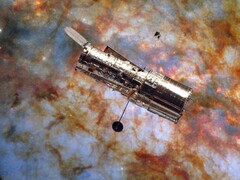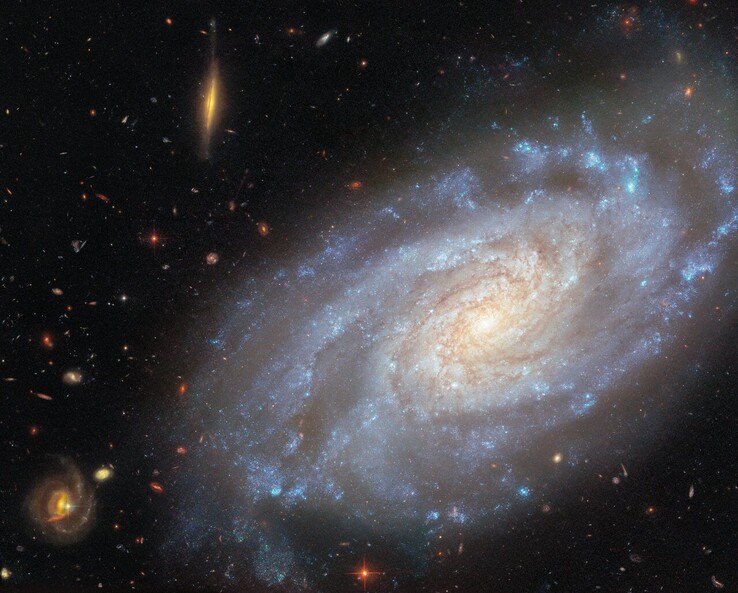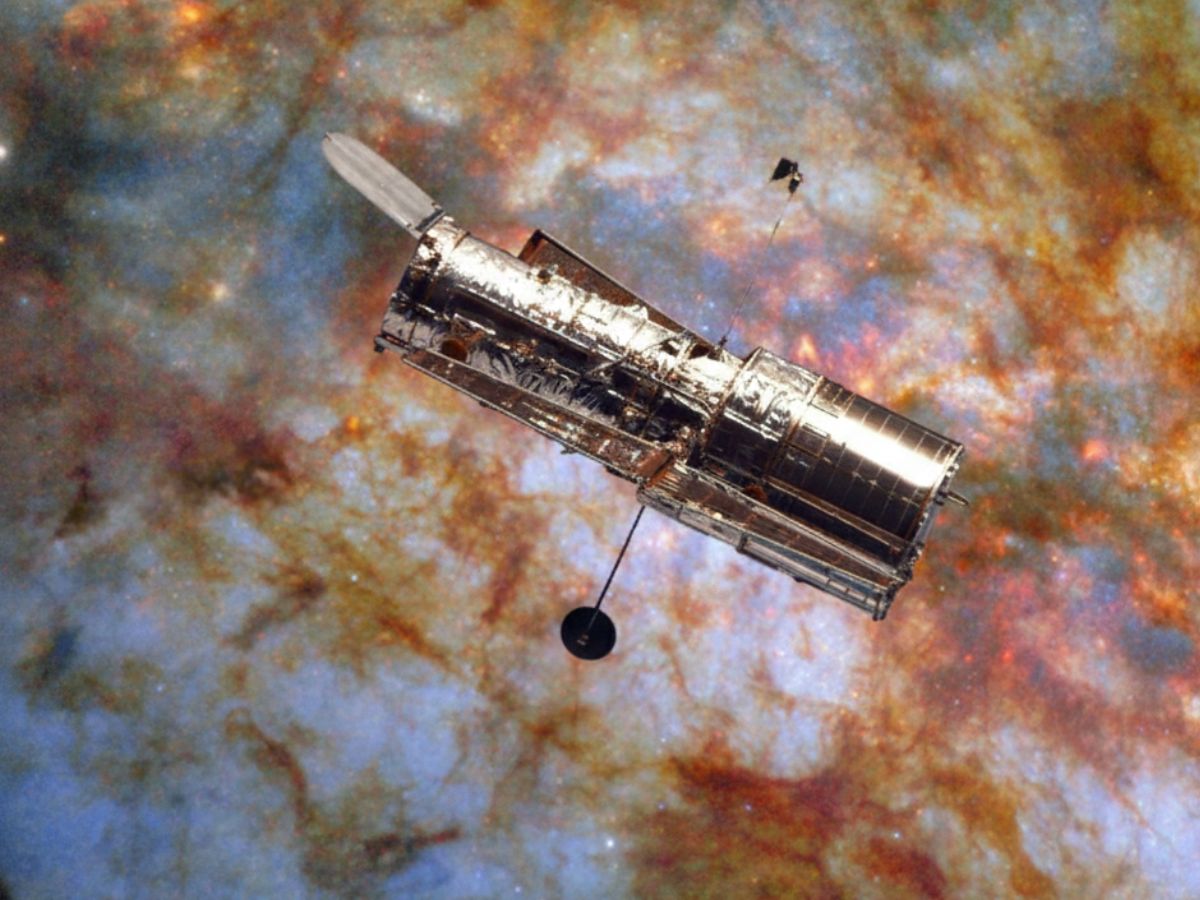 An image of Hubble overlayed on an image of Messier 82 (Image source: ESA/Hubble, NASA, and W. D. Vacca; edited)
An image of Hubble overlayed on an image of Messier 82 (Image source: ESA/Hubble, NASA, and W. D. Vacca; edited)
NGC 3370 is the featured galaxy on the ESA/Hubble Picture of the Week. The galaxy contains Cepheid stars and type Ia supernovae, both of which are standard candles. These objects help astronomers measure distances to faraway galaxies and are critical for measuring how fast the universe is growing.
Astronomers have long been interested in NGC 3370, a spiral galaxy located about 90 million light-years away in the constellation Leo (The Lion). They have observed the galaxy multiple times in the past.
A previous Hubble image of NGC 3370 was released in 2003. But this present observation offers more. It includes wavelengths of light that were not included in the previous image.
The image shows blue star clusters scattered around the galaxy’s spiral arms. The center of the galaxy, as seen in the image, beams with a yellowish-white light. Dark reddish dust threads swirl around the center. Two medium-sized and several small distant galaxies are seen in the background of the image.
While NGC 3370 has eye-catching features, what makes it a galaxy of high interest is the Cepheid stars and type Ia supernovae that have been observed in it. These objects are important because astronomers use them to determine how far away a galaxy is.
Cepheid stars are variable stars that pulsate radially. These stars change in both brightness and size. By measuring the pulsation period, astronomers can calculate how luminous a Cepheid star is. Comparing that brightness with how faint the star looks from Earth gives its distance.
Type Ia supernovae, on the other hand, are the final explosive death of a white dwarf star in a binary system. Their measured brightness tells how far away it is. Since Hubble’s law implies that the farther away a galaxy is from Earth, the faster it is moving away, astronomers can calculate how fast the Universe is expanding.
 Image of NGC 3370 as captured by Hubble (Image source: ESA/Hubble, NASA, A. Riess, and K. Noll)
Image of NGC 3370 as captured by Hubble (Image source: ESA/Hubble, NASA, A. Riess, and K. Noll) Chibuike Okpara – Tech Writer – 252 articles published on Notebookcheck since 2024
Chibuike Okpara – Tech Writer – 252 articles published on Notebookcheck since 2024
I have always been fascinated by technology and digital devices my entire life and even got addicted to it. I have always marveled at the intricacy of even the simplest digital devices and systems around us. I have been writing and publishing articles online for about 6 years now, just about a year ago, I found myself lost in the marvel of smartphones and laptops we have in our hands every day. I developed a passion for learning about new devices and technologies that come with them and at some point, I asked myself, “Why not get into writing tech articles?” It is useless to say I followed up the idea — it is evident. I am an open-minded individual who derives an infinite amount of joy from researching and discovering new information, I believe there is so much to learn and such a short life to live, so I put my time to good use — learning new things. I am a ‘bookworm’ of the internet and digital devices. When I am not writing, you will find me on my devices still, I do explore and admire the beauty of nature and creatures. I am a fast learner and quickly adapt to changes, always looking forward to new adventures.

